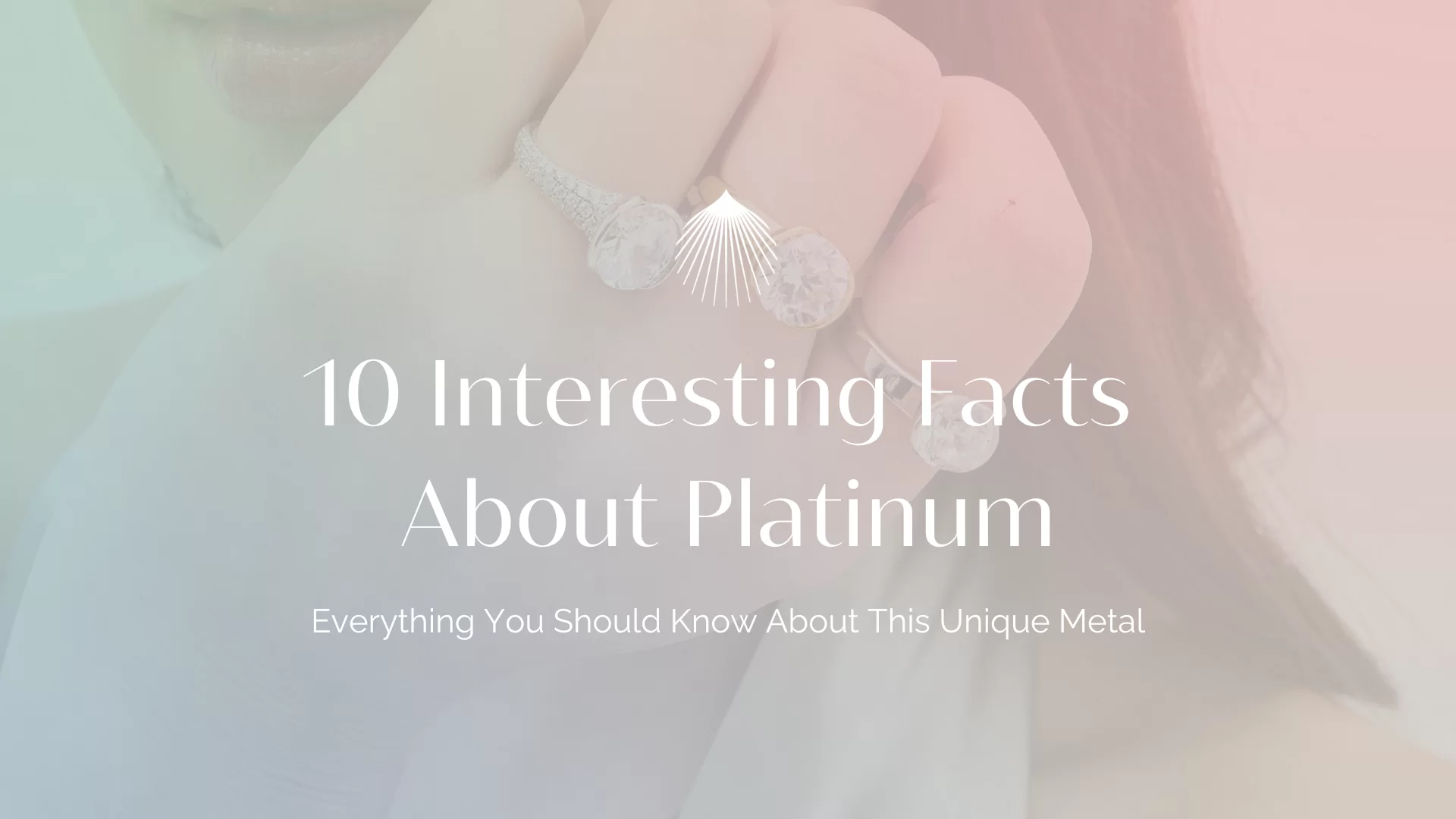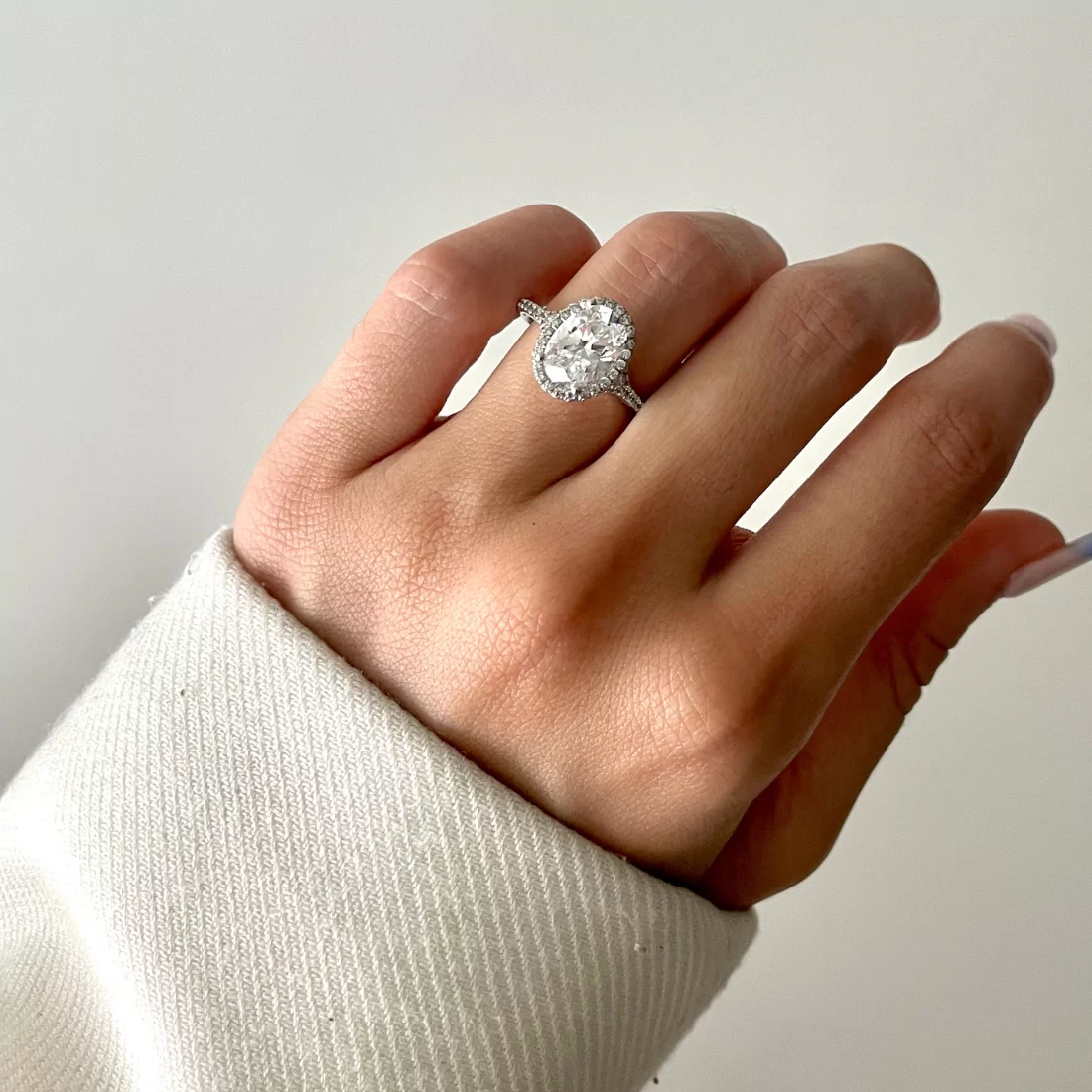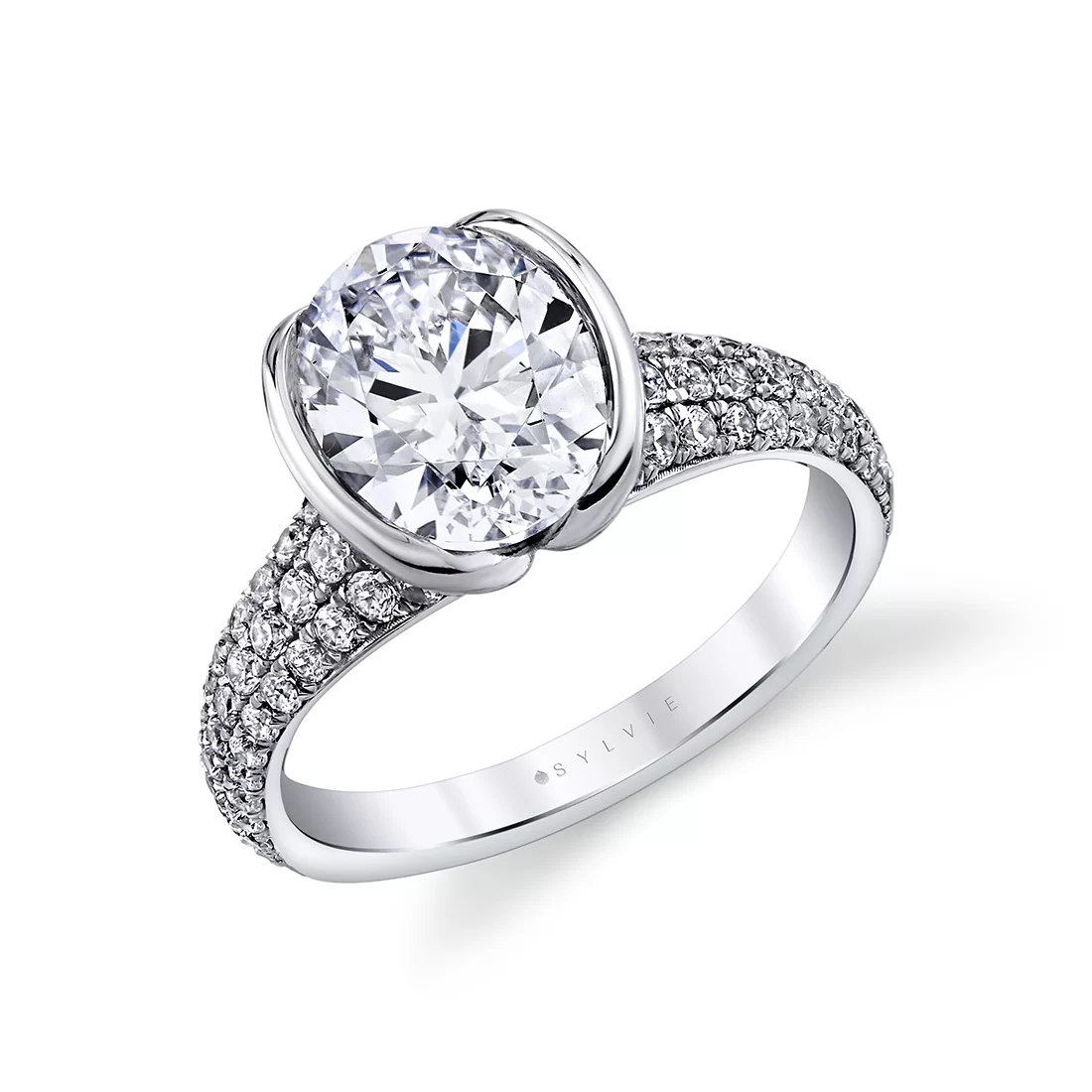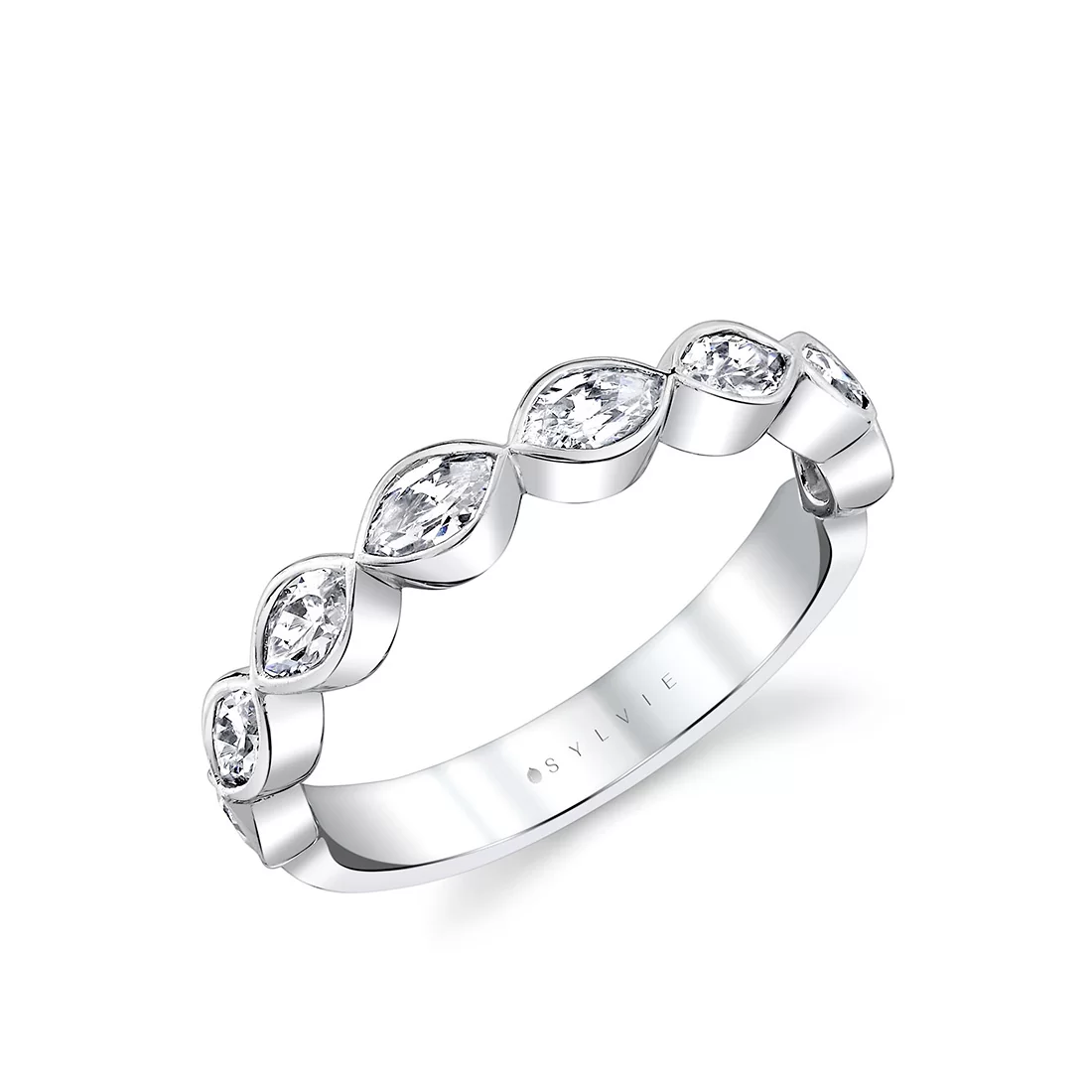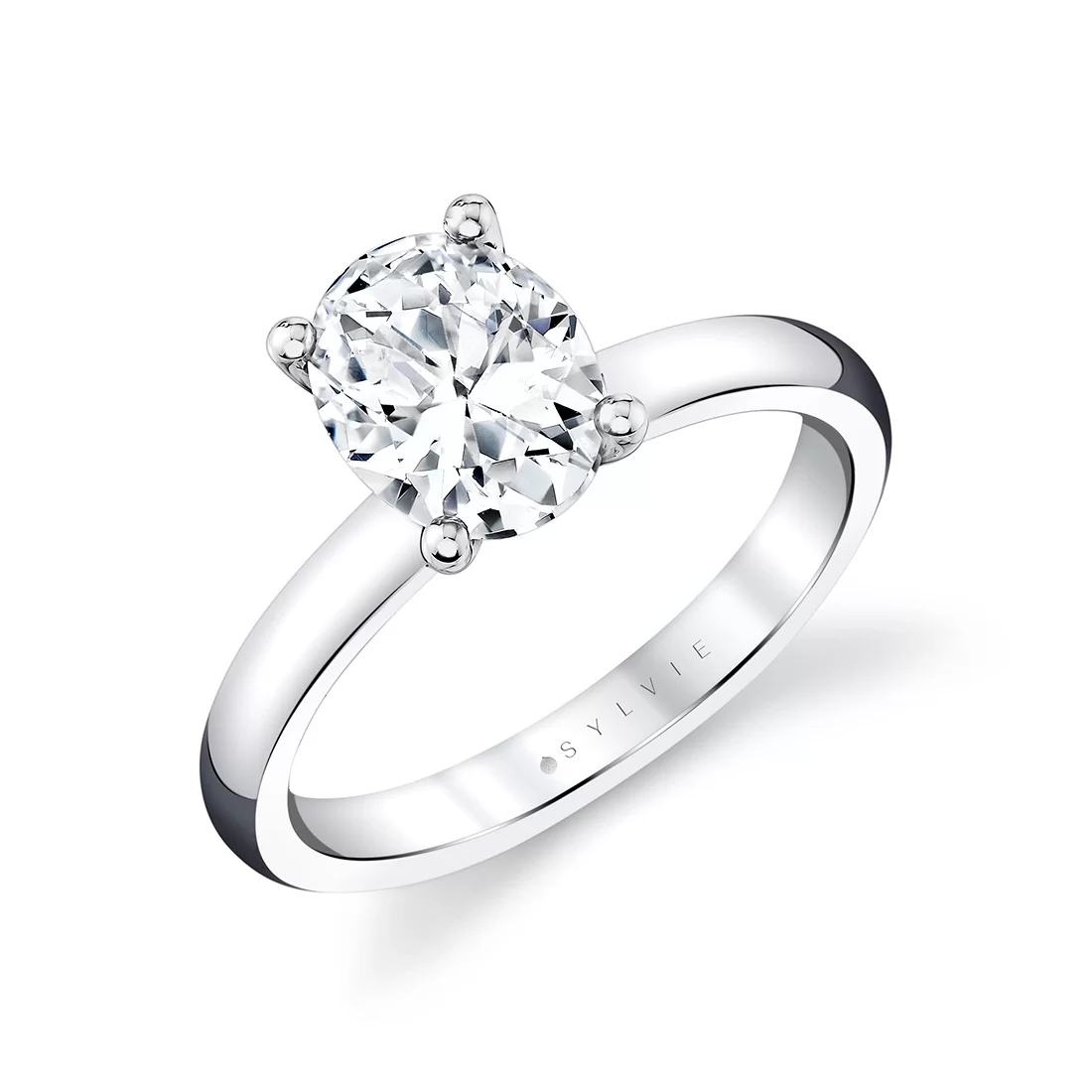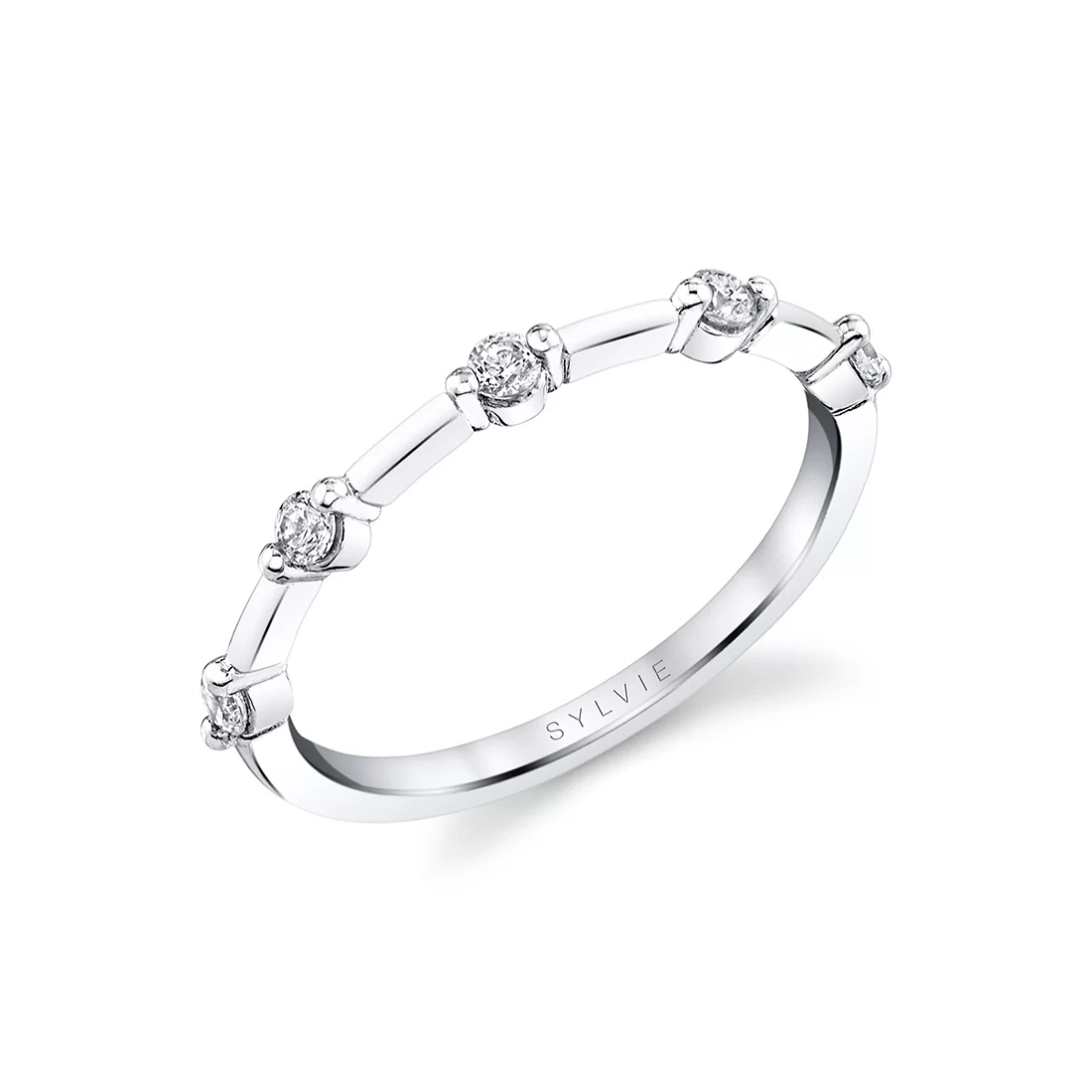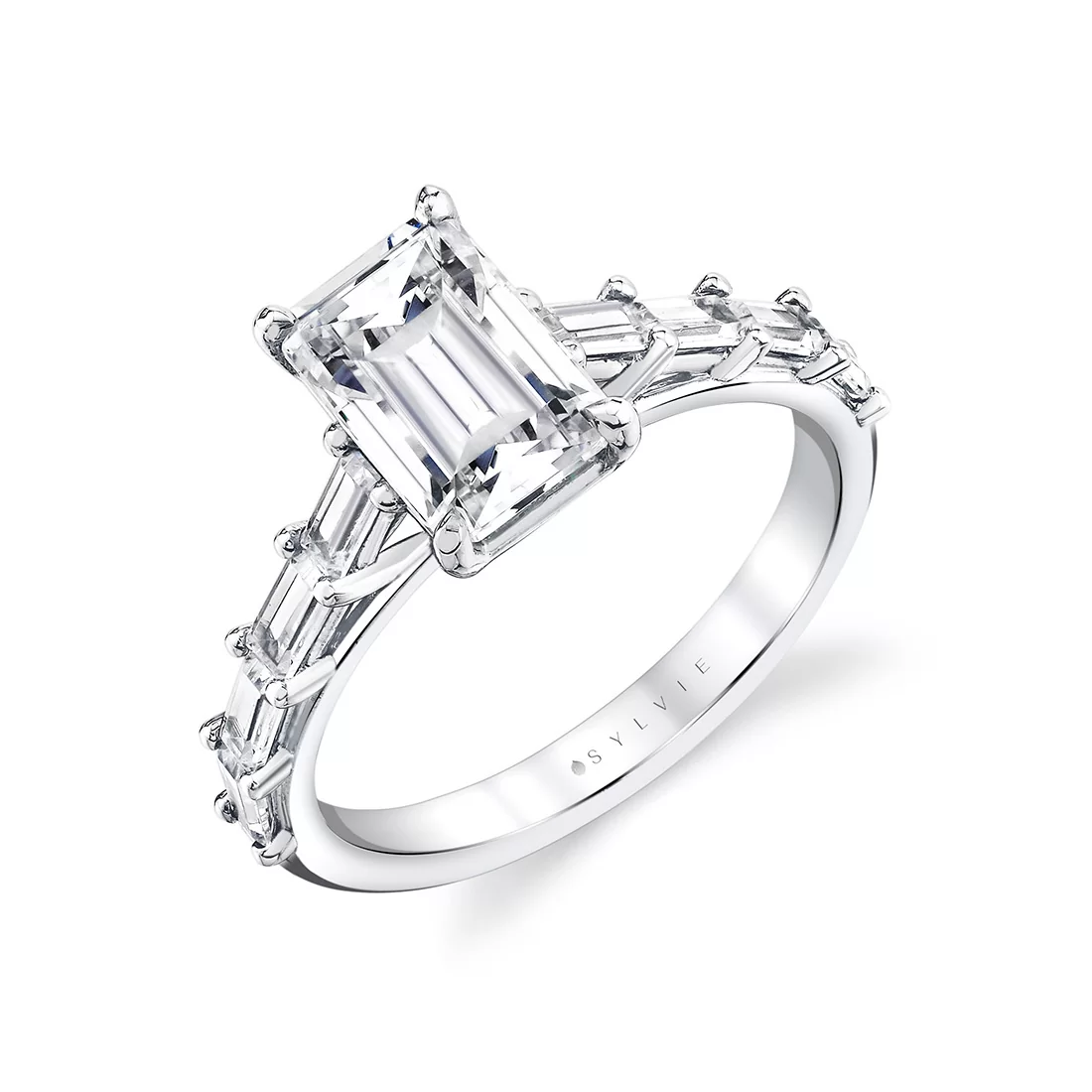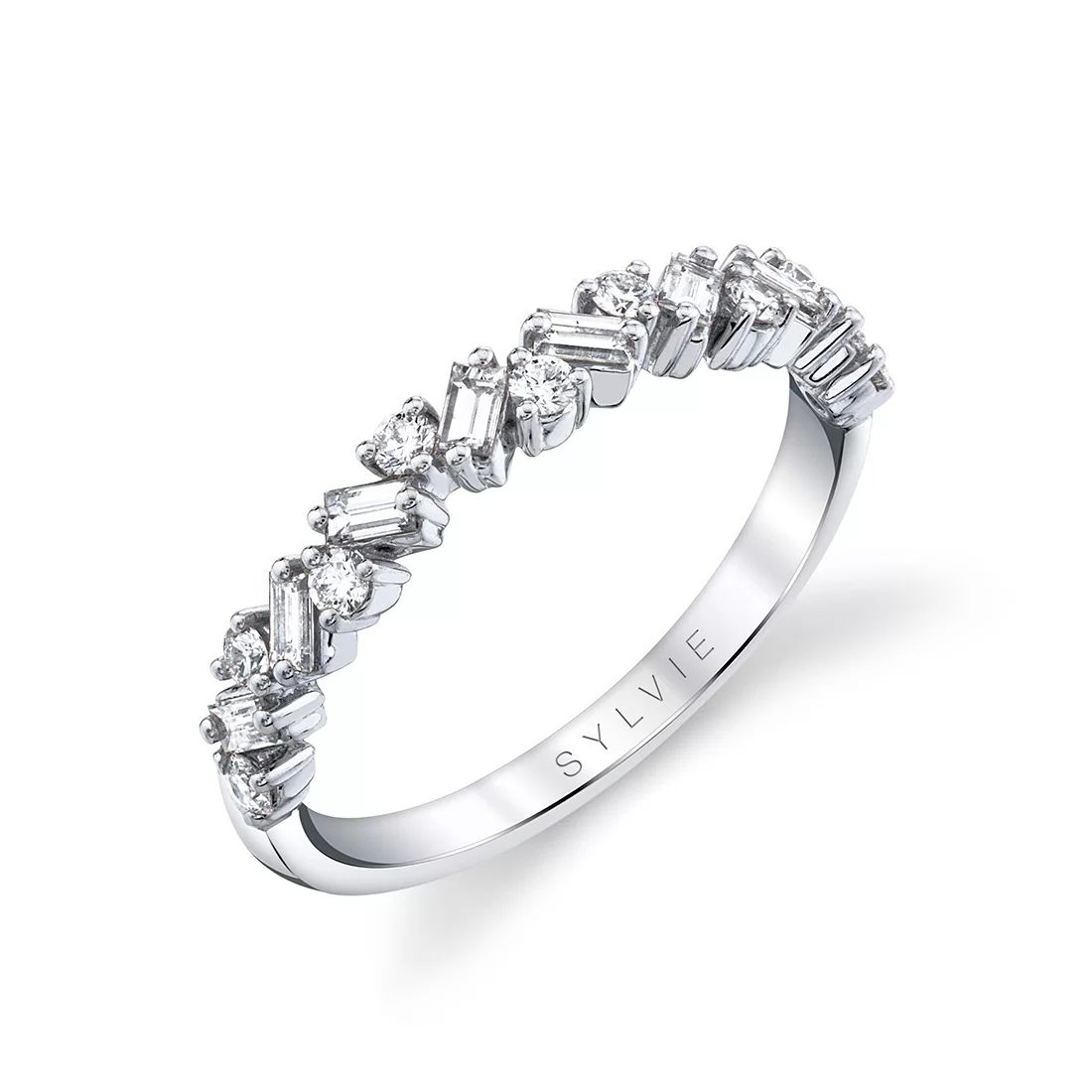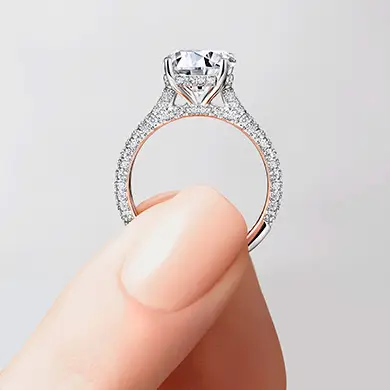When it comes to fine jewelry, platinum holds a distinct place, coveted for its strength, rarity, and enduring elegance. While gold often dominates the conversation, platinum’s appeal lies in its quiet luxury and lasting performance. This naturally white metal has a fascinating history, unique physical properties, and a reputation for purity that makes it ideal for engagement rings, wedding rings, and heirloom designs. Whether you’re considering platinum for your next piece or simply curious about what sets it apart, these interesting facts about platinum reveal why it continues to be one of the most remarkable metals in the world of fine jewelry.
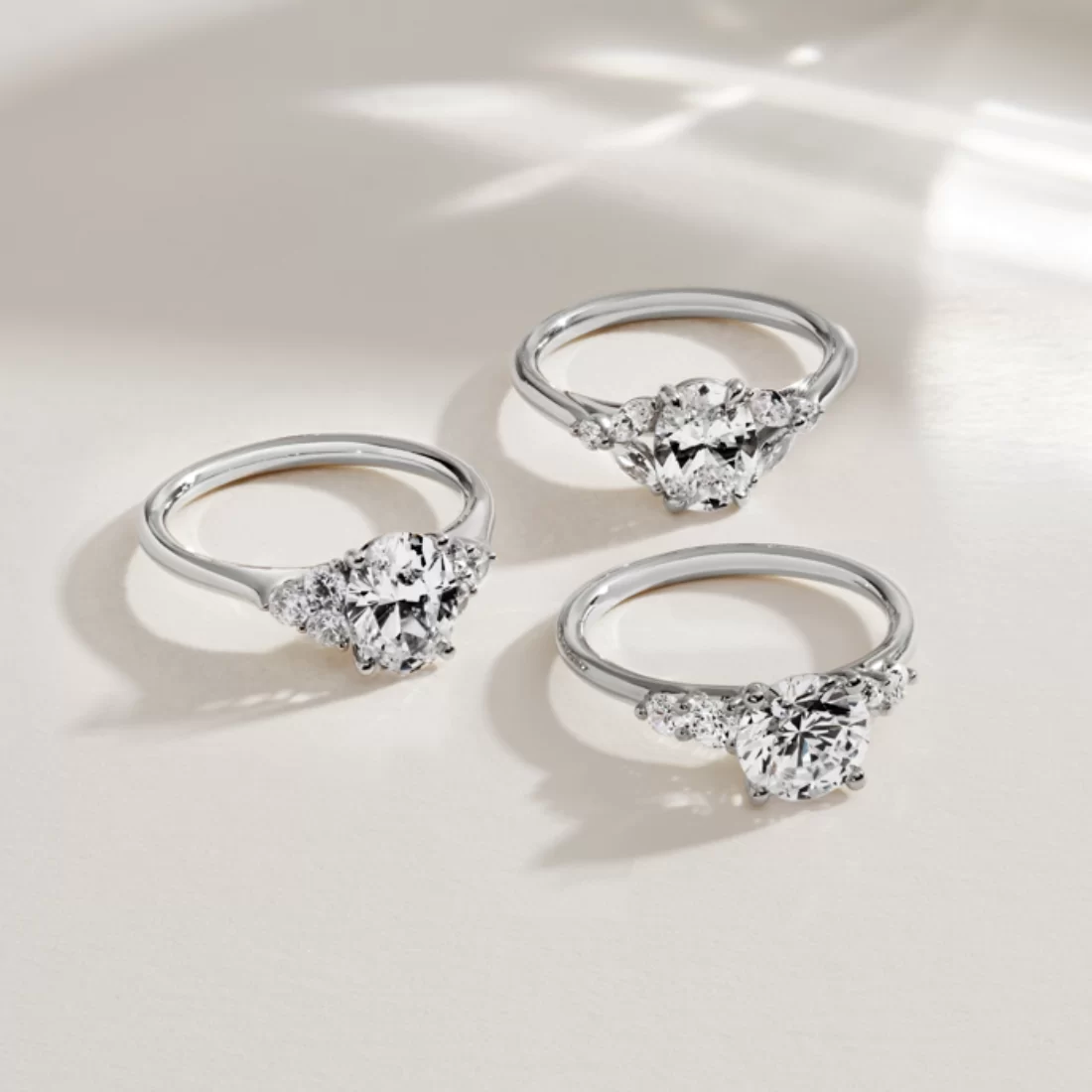
(from left to right) Oval Cut Engagement Ring With Side Stone Clusters – Skylar, Round Cut Multi Stone Engagement Ring – Daria, and Oval Cut Unique Three Stone Engagement Ring – Alina
What Makes Platinum So Interesting?
Platinum’s mystique isn’t just about its price or appearance, it’s about everything the metal represents. From its extreme rarity to its performance under pressure, platinum has long stood as a symbol of strength, resilience, and enduring value. Though often associated with modern luxury, platinum’s roots go far deeper, with a history that spans centuries and cultures. Understanding what makes platinum so compelling helps explain why it remains one of the most desirable metals in the world of fine jewelry.
Why Platinum Captures Global Attention
Platinum is a metal of extremes, exceptionally rare, remarkably dense, and naturally white without the need for enhancement. It’s mined in only a few locations around the world and often found in small quantities, making it significantly less abundant than gold. This rarity drives its value and contributes to its status as a premium choice for engagement rings, wedding bands, and investment jewelry.
But platinum’s appeal isn’t limited to its scarcity. It also boasts an unmatched level of durability and purity. Unlike other metals that are alloyed for strength, platinum is typically used at 90–95% purity, offering both beauty and long-term performance. Its ability to withstand everyday wear while maintaining its form makes it ideal for securing diamonds and preserving sentimental pieces.
Platinum’s Role in Jewelry and Beyond
While platinum is synonymous with fine jewelry today, its journey began centuries ago. Early civilizations in Egypt and South America used platinum-like metals in ceremonial jewelry, long before it was formally identified. It wasn’t until the 18th century that European scientists began to study the metal in depth. Initially considered too difficult to work with, so much so that it was declared “unfit for coinage”, platinum eventually became prized for its strength and resistance to corrosion.
By the 19th and 20th centuries, platinum had found its place in elite jewelry houses, used in royal tiaras, Art Deco masterpieces, and enduring engagement rings. Its ability to hold intricate settings securely and maintain a bright, white luster made it a favorite among designers and collectors alike. Even today, platinum continues to bridge function and elegance, not just in jewelry, but in medicine, aerospace, and industrial applications.
How This Rare Metal Compares to Gold
Gold and platinum often share the spotlight in the world of precious metals, but they differ in fundamental ways. Gold, even in higher karats, is softer and more prone to wear over time. Platinum, by contrast, is denser and more durable, meaning it doesn’t wear away, it displaces. That’s why platinum prongs are often chosen to secure larger or more valuable diamonds.
Visually, platinum maintains its natural white hue without rhodium plating, making it ideal for those who prefer a low-maintenance finish. And while it does develop a patina over time, a soft, satin-like sheen, many find that this adds character to the metal rather than detracting from its appeal.
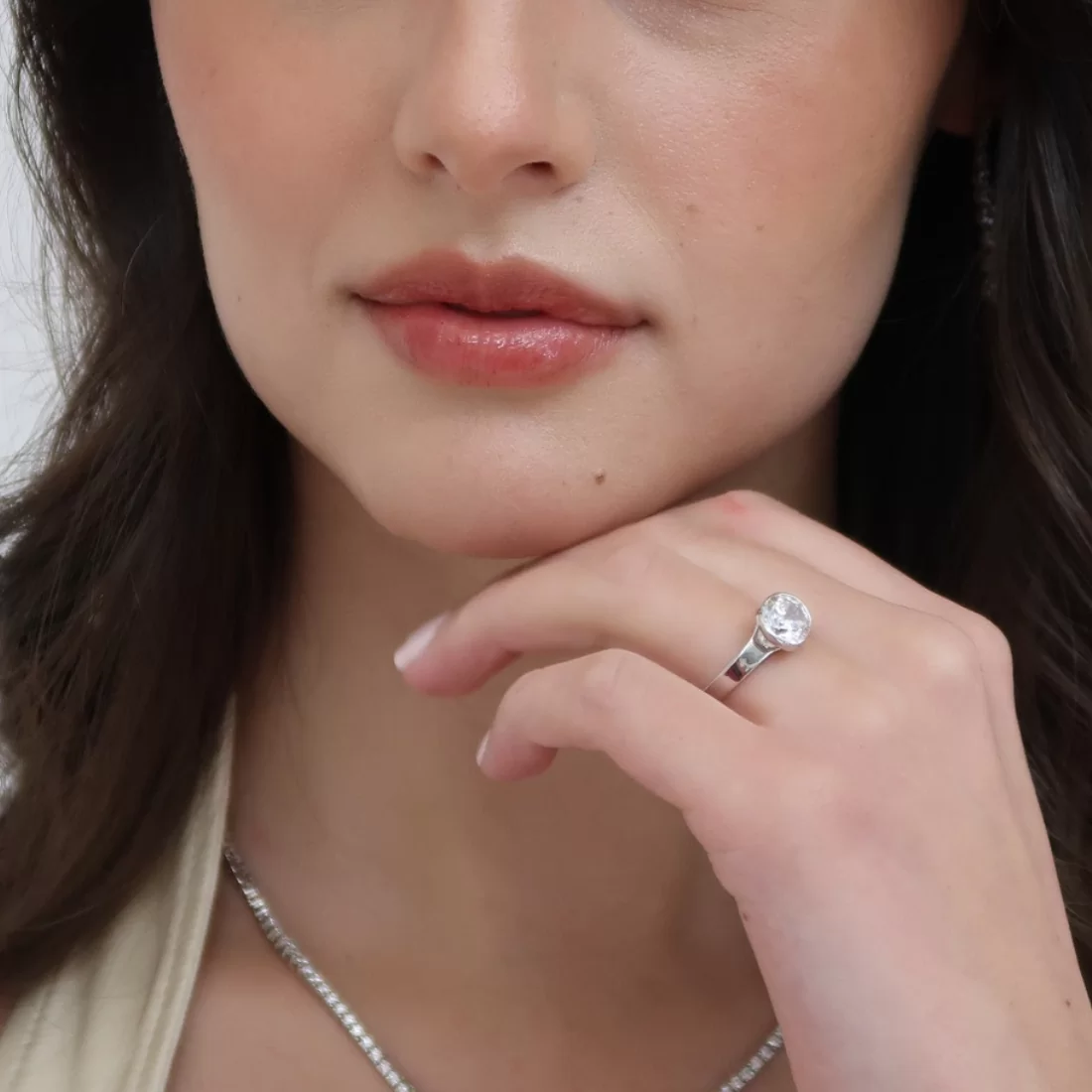
(from top to bottom) Shell Auranova Half Bezel Vista Engagement Ring – Jaci and Diamond Tennis Necklace
10 Interesting Facts About Platinum
From its unmatched purity to its surprising historical twists, platinum is full of stories that make it more than just a precious metal. Below are ten interesting facts about platinum that reveal why it continues to stand out in the world of fine jewelry, and beyond.
1. Platinum Is One of the Rarest Precious Metals
Platinum is about 30 times rarer than gold. In fact, all the platinum ever mined could fit into a single room, less than 1/20th the volume of all the gold ever mined. Most of the world’s platinum supply comes from just a handful of mines, with South Africa accounting for over 70% of production.
Because of its rarity and the difficulty of extracting it, platinum carries a premium. Its value isn’t just tied to trend or appearance, it’s rooted in supply and demand. This scarcity makes platinum a powerful symbol of exclusivity and commitment, especially in engagement rings and heirloom pieces.
2. Platinum Is Exceptionally Durable and Dense
Platinum’s density makes it ideal for holding diamonds and gemstones securely. It doesn’t wear down or thin out over time like softer metals can. Instead of losing metal when scratched, platinum displaces, meaning it shifts rather than flakes off. This makes it perfect for prongs, bezels, and settings that are meant to last a lifetime.
For everyday jewelry like engagement rings or wedding bands, durability matters. Platinum doesn’t easily deform under pressure, making it a smart choice for those with active lifestyles. It offers both beauty and structure, which is why many couples choose it for rings that are worn daily and intended to be passed down.
3. Platinum Is Naturally White and Never Tarnishes
Unlike white gold, which requires rhodium plating to achieve and maintain its silvery color, platinum is naturally white. It reflects light beautifully and retains its tone without the need for additional coatings, saving on long-term maintenance and enhancing the diamond’s brilliance.
Platinum doesn’t tarnish, but it does develop a soft, matte finish known as a patina. This change in texture is part of the metal’s appeal and can be polished back to its original luster if desired. Many wearers appreciate the patina for its unique, lived-in quality, a mark of the piece’s journey over time.
4. Most of the World’s Platinum Comes from One Place
Over 70% of the world’s platinum is mined in South Africa, primarily from the Bushveld Complex, an underground geological formation that also contains other platinum group metals like palladium and rhodium. The concentration of supply in one region makes platinum particularly sensitive to geopolitical and environmental shifts.
While South Africa leads production, other sources include Russia, Zimbabwe, Canada, and the United States. Still, global output remains limited, fewer than 200 metric tons are mined annually, underscoring platinum’s status as one of the world’s most exclusive precious metals.
5. Platinum Has Industrial and Medical Uses
Platinum plays a critical role in the automotive industry as a key component in catalytic converters, which help reduce vehicle emissions. Its stability at high temperatures and resistance to corrosion make it ideal for converting toxic gases into less harmful substances.
Beyond its use in machinery, platinum is also utilized in medicine. Certain chemotherapy drugs, such as cisplatin, use platinum compounds to treat cancers like testicular, ovarian, and lung cancer. Its ability to bind to DNA and inhibit cell replication makes it a powerful agent in cancer therapies.
6. Platinum Was Once Declared “Unfit for Coinage”
When platinum was first introduced to European scientists in the 1700s, it was viewed with skepticism. It was difficult to melt and refine with the tools of the time, and its appearance resembled an inferior form of silver. Spanish authorities even declared it “unfit for coinage,” considering it a counterfeit metal.
Over time, platinum’s unique properties, its weight, purity, and corrosion resistance, were better understood and valued. By the late 19th century, it had become a staple in luxury jewelry, prized by royalty and jewelers alike. Its transformation from misunderstood metal to symbol of prestige is part of what makes platinum’s story so fascinating.
7. Platinum’s Purity Standards Are Extremely High
Most platinum jewelry is stamped with “950,” meaning it contains 95% pure platinum and only 5% alloy metals. This is significantly purer than 18K gold, which contains 75% gold. The higher purity makes platinum hypoallergenic, ideal for those with sensitive skin, and contributes to its luxurious weight and feel.
While gold alloys are mixed with other metals for durability and color, platinum is naturally strong enough to be used in high purity. This makes it a better choice for those who want a metal that’s closer to its raw form while still performing well for daily wear.
8. Platinum Develops a Patina with Wear
Over time, platinum develops a soft matte texture known as patina, a surface change caused by the metal’s natural displacement rather than loss. This finish is unique to platinum and often appreciated for the sense of character and depth it brings to the piece.
While some prefer the polished look of freshly finished platinum, others embrace the patina as a visual record of their jewelry’s story. It can always be professionally re-polished if desired, but many consider the patina part of platinum’s quiet elegance and lasting charm.
9. Platinum Was Used in Royal and Historic Jewelry
Platinum became a favorite among royal families and iconic jewelry houses in the early 20th century. Historic platinum engagement rings, like those worn by Queen Elizabeth II and Grace Kelly, helped establish the metal as a symbol of prestige, refinement, and lasting beauty.
Due to its durability and resistance to corrosion, platinum is often found in Art Deco and Edwardian-era jewelry. These antique pieces have withstood the test of time, proving platinum’s suitability for heirloom rings that are passed down through generations.
10. Platinum Symbolizes Strength and Endurance
In contemporary design and culture, platinum is often associated with excellence, resilience, and enduring love. From platinum credit cards to platinum music records, the metal represents the highest level of achievement.
Platinum’s strength, purity, and timeless appeal make it a popular choice for couples investing in engagement rings and wedding bands. It’s not just about luxury, it’s about choosing a metal that mirrors the values of commitment and longevity.
Why Platinum Continues to Stand Out in Fine Jewelry
Platinum’s appeal goes beyond surface-level beauty. Its natural strength, rarity, and purity make it one of the most enduring and thoughtful choices for fine jewelry—especially when it comes to engagement rings and wedding bands. Whether you’re drawn to its performance or the symbolism it carries, platinum offers a level of confidence few other metals can match.
The Balance of Luxury and Longevity
Platinum strikes the ideal balance between elegance and practicality. Its dense structure secures diamonds more effectively than softer metals, and it ages with grace—developing a patina that speaks to the journey of the wearer. For those investing in fine jewelry meant to last, platinum offers both immediate impact and generational value.
Why Platinum Is a Smart Investment for Bridal Jewelry
While platinum’s initial cost may be higher than other metals, its long-term benefits often outweigh the difference. Its purity ensures hypoallergenic wear, and its durability minimizes the need for repairs or replacement. It’s a smart choice for couples who view their bridal jewelry not only as a statement, but as a lifelong investment.
How Sylvie Rings Highlight Platinum’s Best Qualities
At Sylvie, our designs are created with intention—balancing form, comfort, and structure. Our platinum settings are crafted to highlight the diamond’s natural beauty while offering the security needed for everyday wear. Whether it’s a Shell Auranova solitaire, a hidden halo setting, or a customized three stone ring, platinum enhances every detail with quiet strength and luminous beauty.
Sylvie Top Platinum Engagement Ring and Wedding Ring Styles
Platinum brings added dimension and durability to each of our signature settings, allowing every detail, from bold bezels to delicate prongs, to hold its shape and brilliance over time. The following styles are particularly striking in platinum, offering a refined balance of form, function, and emotional weight.
Shell Auranova Half Bezel Pavé Engagement Ring with Shell Tip Silhouettes – Mariselle
The Mariselle ring features our signature Shell Auranova design, elevated with half bezel prongs and accent pavé diamonds. This sculptural setting embraces the center stone from both sides, forming a Shell tip silhouette that’s elegant from every angle. In platinum, its clean lines and open space offer striking contrast and security, ideal for modern brides who value strength and subtle symbolism.
Marquise Cut Bezel Wedding Ring – B166
The B166 wedding band showcases marquise cut diamonds set in alternating east-west bezels for a sleek, uninterrupted line of sparkle. The minimalist design allows each diamond’s shape to take center stage, while the platinum setting enhances the crisp edges and light flow between stones. This band offers an understated dimension that pairs effortlessly with both contemporary and vintage-inspired engagement rings.
Oval Cut Wide Band Solitaire Engagement Ring – Demitra
The Demitra ring pairs an elongated oval center stone with a bold, flat-edge band that balances structure and simplicity. In platinum, the wide band takes on a modern, mirror-like finish that beautifully offsets the soft curves of the oval cut. This style is ideal for brides seeking a substantial yet clean-lined silhouette with lasting presence.
Classic Spaced Diamond Wedding Ring – Eniko
With evenly spaced round brilliant diamonds encircling the finger, the Eniko band offers a fresh, open take on the eternity style. The platinum setting provides strong contrast and lasting structure, allowing the negative space to shine just as much as the diamonds themselves. It’s a refined choice for stacking or wearing solo.
Iconelle Baguette Engagement Ring – Gwen
The Gwen ring blends Sylvie’s Iconelle styling with tapered baguette side stones for a sophisticated, architectural look. In platinum, the clean facets of the baguette diamonds are especially striking, offering a play of light and reflection that highlights the center stone’s brilliance. Ideal for those drawn to linear design with timeless appeal.
Slanted Baguette and Round Diamond Wedding Band – B129
The B129 band creates subtle movement by alternating slanted baguette and round diamonds in a continuous pattern. This combination offers visual interest and sparkle from every angle, especially when set in platinum. The cool-toned metal enhances the clean geometry of each stone, making it an elegant companion to a wide range of engagement rings.
Platinum Jewelry Care and Considerations
While platinum is known for its strength and low-maintenance beauty, proper care ensures it continues to perform and look its best for years to come. Whether you wear your platinum ring daily or reserve it for special occasions, keeping it clean and well-maintained preserves both its appearance and structural integrity.
How to Maintain the Look of Platinum Over Time
Platinum’s natural white tone doesn’t fade or require rhodium plating, but it can develop a soft patina over time. Some wearers embrace this matte texture, while others prefer a polished finish. A Sylvie authorized retailer can easily restore its original shine if desired. Regularly cleaning your platinum jewelry at home with a mild soap and soft brush will also help maintain its luster between cleanings.
Best Practices for Cleaning and Storage
When not in use, store platinum jewelry in a fabric-lined box or separate pouch to prevent surface contact with other metals. Avoid harsh chemicals and abrasive cleaners that could dull the surface or interfere with any gemstones in the setting. If your ring has intricate details or pavé diamonds, a professional ultrasonic cleaning every few months can help maintain clarity and sparkle. Read more in our guide on How to Clean An Engagement Ring.
Should You Refinish or Embrace the Patina?
The appearance of platinum evolves with wear. Some people choose to have their ring re-polished every few years, while others embrace the natural character of the patina. There’s no right or wrong choice, what matters most is how the ring reflects your story. At Sylvie, we believe platinum’s quiet evolution only adds to its beauty and emotional depth.
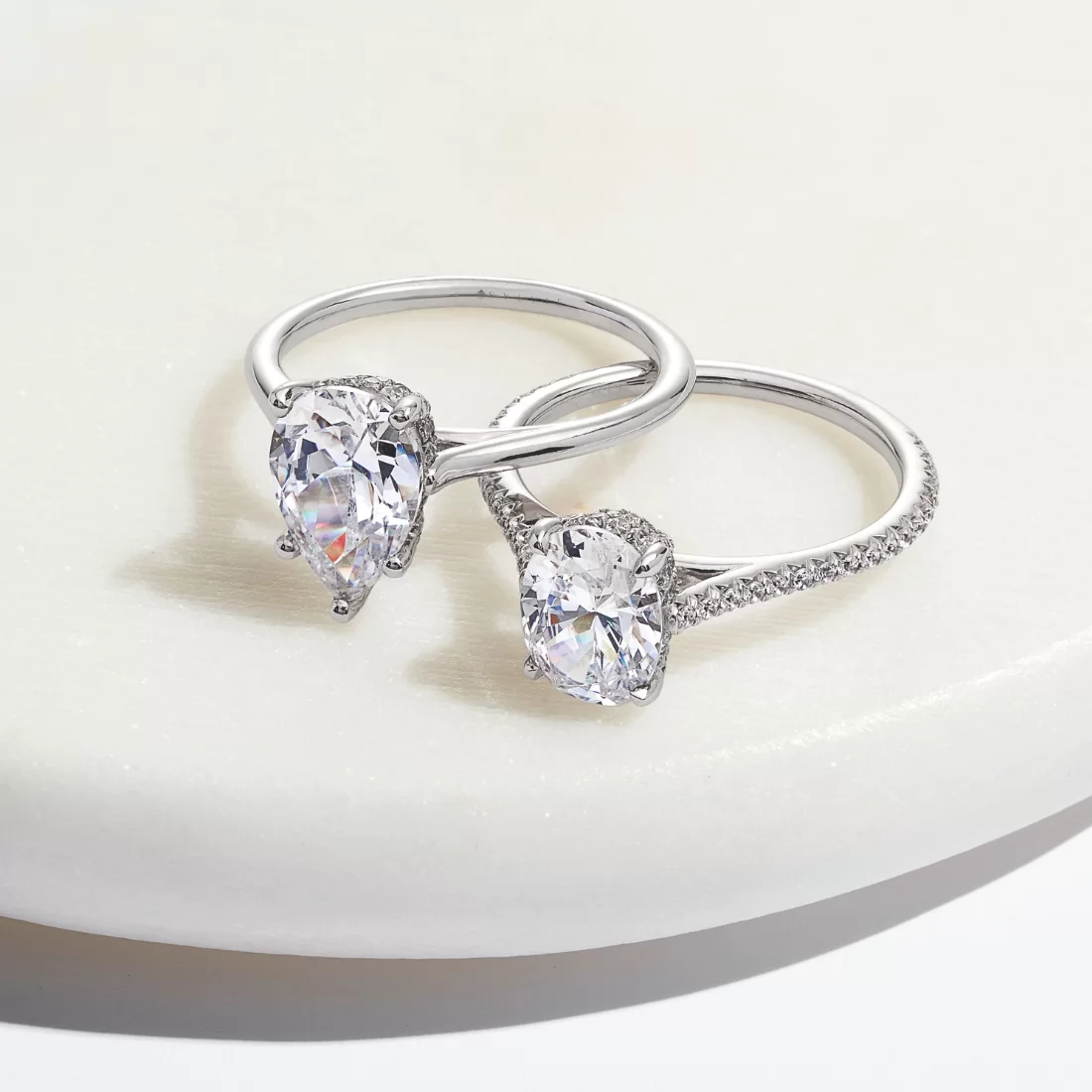
(from left to right) Pear Shaped Solitaire Hidden Halo Engagement Ring – Carter and Oval Cut Classic Hidden Halo Engagement Ring – Steffi
Final Thoughts on These Interesting Facts about Platinum
From its extreme rarity to its symbolic strength, platinum is far more than just a precious metal, it’s a material rich in history, performance, and meaning. Each of these interesting facts about platinum highlights why it remains one of the most coveted choices in fine jewelry. Its natural durability, purity, and quiet sophistication make it a favorite for engagement rings, wedding bands, and heirloom designs that stand the test of time.
At Sylvie, we design settings that honor everything platinum represents: intentionality, elegance, and enduring beauty. Whether you’re drawn to platinum’s structural integrity or its refined aesthetic, choosing this metal is an investment in something truly lasting.
To experience the difference for yourself, visit an authorized Sylvie retailer and explore our collection of platinum engagement rings and platinum wedding bands in person.
FAQs About Platinum
Is platinum better than gold?
Platinum and gold each have strengths. Platinum is denser, more durable, and naturally white, while gold is lighter and available in multiple tones. For longevity and security, especially in engagement rings, platinum often offers greater peace of mind.
Does platinum scratch easily?
Platinum can scratch, but unlike gold, it doesn’t lose metal—it simply displaces. Scratches form a patina over time, which many consider part of its appeal. It can also be professionally polished to restore shine.
Is platinum hypoallergenic?
Yes. Because platinum is used at 90–95% purity, it is naturally hypoallergenic and ideal for those with sensitive skin or metal allergies.
Why is platinum so expensive?
Platinum is rarer than gold, denser, and more difficult to mine and refine. Its high purity, performance, and limited global supply all contribute to its elevated price point.
What is platinum’s melting point?
Platinum has a high melting point of around 3,215°F (1,768°C), which makes it stable under extreme heat, one reason it’s used in industrial applications and high-performance jewelry.
How do I know if platinum is right for my ring?
If you’re looking for strength, purity, and a naturally white metal that won’t require maintenance coatings, platinum is an excellent choice. It’s especially well-suited for engagement rings, wedding bands, and heirloom-quality pieces.
What does platinum symbolize in jewelry?
Platinum represents strength, endurance, and rare beauty. It’s often chosen for milestone moments, like engagements or anniversaries, because it reflects long-lasting love and commitment.
